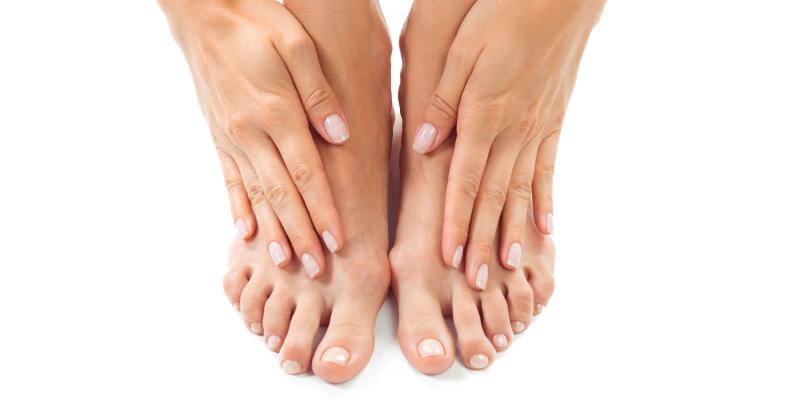Many people experience foot issues in their life, be it foot pain, stiffness, or aching feet. But foot issues are even more common for people with diabetes for a number of reasons.
“Even if someone is newly diagnosed and seems fairly healthy, it’s still important to take care of your feet,” said Shelley Gath, DPM, podiatrist in California and chair of the American Diabetes Association’s Foot Care Interest Group. “They may already be suffering from nerve damage or micro vascular disease that will put them at increased risk of diabetic foot complications. They can develop cuts or something more severe and will not be able to feel the injury.”
Dr. Gath advises everyone to go for a preliminary diabetes foot screening because it’s important to be able to take steps to prevent foot issues rather than chasing problems later on.
Take better care of your feet with these eight tips:
1. Check your feet daily for sores, cuts, cracks, blisters, or redness. Use a mirror to see all of your foot.
2. Wear socks. If you have diabetes, remember that not all socks are created equal. Try to choose socks that:
- Are white or light-colored to make it easy to spot any bleeding or drainage, for example, if you have a cut or an ingrown toenail.
- Fit well and aren’t too tight.
- Are made of a synthetic fabric or wool to wick away moisture. Extra moisture can lead to skin break down and infections.
- Have no seams, which can be bothersome.
- Have some padding if you need more cushion on the bottom of your feet.
For some people, socks made for people with diabetes may be advised. These socks have an elastic area in and around the ankle so they are not too constricting. Some socks even have smart sensors that can monitor temperature and detect early signs of infection. More studies are expected to come out about this technology.
3. Get fitted for the right footwear and wear shoes indoors and out. Online shopping is convenient, but it’s best to get measured and try on new shoes in person. Leave a bit of space (about the size of your thumb nail) between the tip of your big toe and your shoe.
4. Don’t put shoes on without socks. Doing so can cause your foot to rub (more friction and pressure points) and can make it more prone to fungal infections because socks help absorb excess moisture. In the warmer months, refrain from going barefoot, wearing flip flops, or other open shoes.
Keeping Your Foot Protected Matters
Peripheral neuropathy can be one of the first complications of diabetes. It affects the nerves in your extremities like your hands or feet. When this happens, you aren’t necessarily able to feel whether the pavement is too hot, if you get a splinter, or if you step on something sharp, like a tack, broken glass, or other things that are left on the floor. Always wear socks and shoes, even indoors, to prevent injury.
5. Ask your provider about compression socks or stockings if you have venous insufficiency (for example, spider or varicose veins), swelling in your leg or foot, a history of deep venous thrombosis (a previous blood clot in the leg), or walk or stand a lot. Choose stockings that have an open toe so you can see the skin and color of your toes.
6. Wash your feet with warm (not hot) soapy water and be sure to dry between your toes to avoid problems.
7. Keep toenails trimmed. Cut straight across to prevent the nail from growing into the skin (ingrown toenail).
8. Keep up with regular foot care visits and exams and be sure everyone is on the same page. Research shows outcomes are better when foot problems from diabetes are managed by a team—that means your endocrinologist, primary care doctor, foot doctor (podiatrist), and even vascular and infectious disease specialists working together. One study out of Italy found this multi-disciplinary approach led to more than a 30% reduction in major amputations.
When buying diabetes-related foot products, look for the American Podiatrist Medical Association (APMA) seal of approval, which means they promote good foot health. You can also ask your diabetes or podiatrist about their favorite running or athletic shoe store nearby or pharmacies that carry diabetes and compression socks.
People with diabetes can develop many different food problems, but being proactive in protecting your feet can go a long way in avoiding any serious complications. Learn more about diabetes foot complications.
For tips and tricks on maintaining a healthy lifestyle, sign up for the Healthy Living e-newsletter.
Written by Amanda Crowe, MA, MPH

